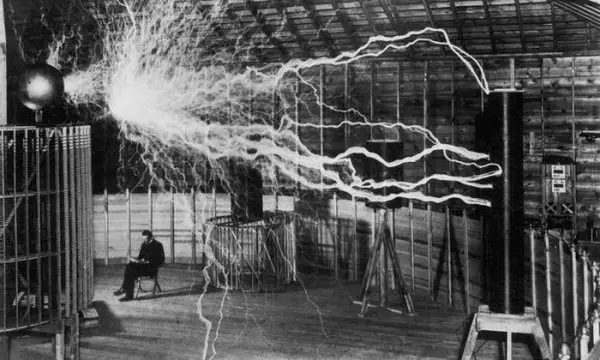Nikola Tesla’s Views On Free Energy And Alien Life Revealed In This Rare Interview From 1931
Tags: opinion

Among the ranks of the greatest minds that humanity has ever seen are names like Albert Einstein, Stephen Hawking, Thomas Alva Edison, and Nikola Tesla. But, among the other names, Tesla is perhaps the least talked about in general history. Most of our textbooks in school only briefly mention the man if they do include him. Usually, he is overlooked.
However, Tesla’s accomplishments are numerous. The Croatian-born genius is often considered to be the real herald of our modern technology. Probably because he was the inventor of remote control and the radio. Tesla’s vision of the future included mentions of drone technology as well as radio waves being transmitted into space. Today, these technologies are all very real.
Read: In 1926 Nikola Tesla Predicted And Described The Smartphone
Nikola Tesla’s ultimate goal in life was to ensure some kind of infinite and free energy that the world could harness. Unfortunately, that technology remained undiscovered. Apart from that, he was also the first to show a robot that actually worked. It was entirely controlled using radio waves, and it was called the “Teleautomaton”.
Tesla had invented the radio primarily to transfer energy not just between cities or countries, but between planets. All these Tesla had talked about in an interview he gave to Time in 1931.
The Interview That Is Almost A Century-Old Now
The occasion of the interview was the 75th birthday of Nikola Tesla. He had claimed to have been working on 2 projects at the time: a simpler explanation of some natural phenomenon than the one offered by Professor Einstein, and a “new source of power.”
He claims that the source would be “completely unpredictable and new”. It would “constantly and always generate energy”. Additionally, capturing this energy would be very simple. Tesla continued that even if the initial installation cost may be high, the price would drop with time. Plus, the machine would be nigh indestructible, so once set up, it would “never have to be replaced, removed, or maintained”. And, he clearly stated that he was not talking about atomic energy. To that effect, Tesla had claimed to have thought of a technology that will let humanity transmit huge amounts of energy between planets.
Read: Inspired By Nikola Tesla This Startup Wants To Make Wireless Electricity A Reality In New Zealand
However, Tesla never revealed what kind of technology it was. All he ever said about it afterward was that he would “reveal it in a few days or years”.
But The Free Energy Was Only A Stepping Stone
There was a bigger purpose behind Tesla’s search for infinite free energy – “interplanetary communication”. He was certain that it would take place someday. He was convinced that once humanity on earth knew that there were other intelligent lifeforms in the universe, we would see a “magical transformation”. Tesla believed that it would give rise to an eternal universal brotherhood.
However, the interview did not include much about his experiences with alien life. That can be better found in his book, “Talking with Planets”. There, he had claimed to have encountered signals that could not have been of earthly origin. He believed that they came from Mars. He claimed that he received these signals because he had the only functioning wireless receiver on Earth back then. Plus the conditions were just perfect. Later on in his life, Tesla had gradually lost belief in his theory that Mars was inhabited. However, the signals were definitely of extraterrestrial origin
As such, today, we do have a part of the future that Tesla had envisioned – wireless transmission of information available to all. However, energy is yet to be transmitted like that on a planetary scale. Be that as it may, Tesla’s vision may still come true both regarding free energy and alien life.
Read the entire interview here
Check out Truth Theory Youtube Channel and subscribe to stay updated, click here
Image credit: Photographer: Dickenson V. AlleyRestored by Lošmi, CC BY-SA 4.0, via Wikimedia Commons
Leave Comment: